What is brand architecture?
Brand architecture is the strategic framework that defines how an organization’s brands, products and services are organized, related and presented to consumers.
The SAIT brand – and our reputation – has taken years to build. We are a large institution formed by different units that tend to serve distinct parts of our audience. Our core brand is the umbrella that ties up all these units into one single and coherent family. Anything we communicate or create falls under this brand umbrella.
As a result, some rules must be followed to ensure our audience can identify and make sense of our brand. Abiding by the following rules is to your benefit, helping you leverage our established reputation in the community and avoid confusion.
Jump to section
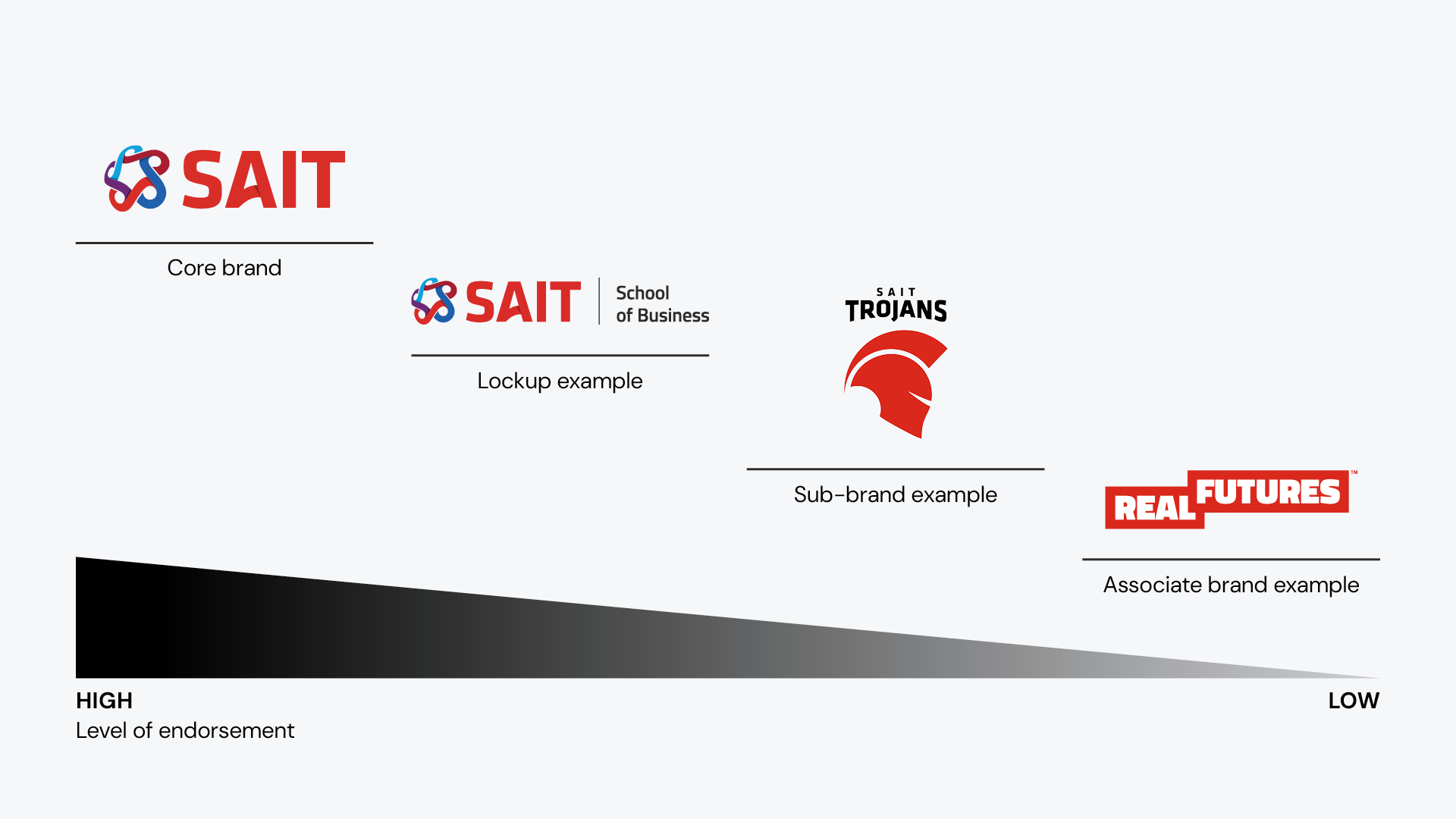
Core brand
Our core or ‘main’ brand is the primary identity we communicate consistently and coherently to our audiences. We build awareness and familiarity with SAIT using our primary logo, key messages, tone of voice, brand colours, fonts, and imagery in most of our communications (there are some exceptions – we’ll get to those).
Our visual identity sets us apart. We want to make it easy for people to recognize any information from SAIT. The application of our marks helps achieve this. All lockups, sub-brands and associate brands fall within SAIT’s brand architecture and have specific requirements.

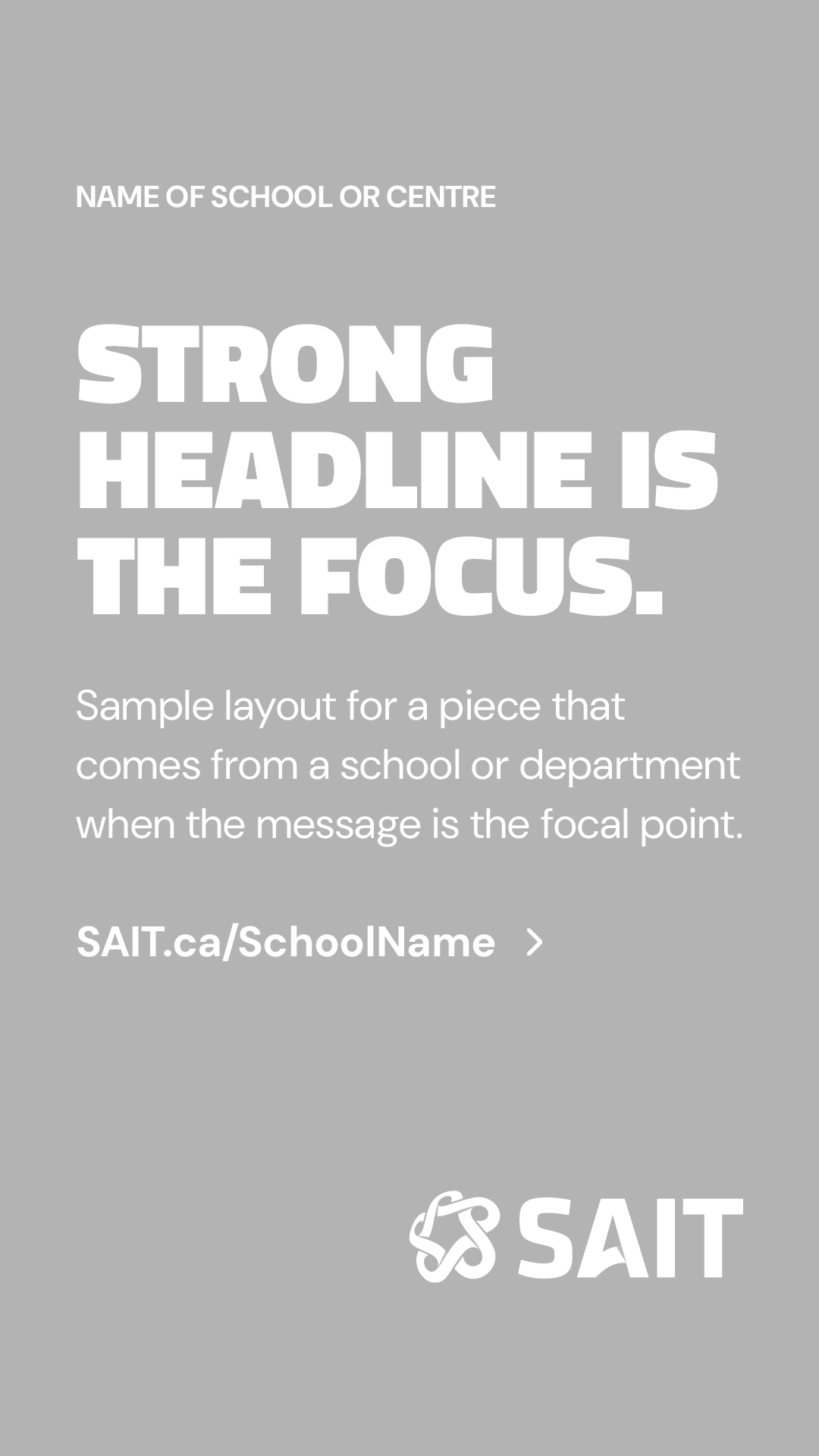
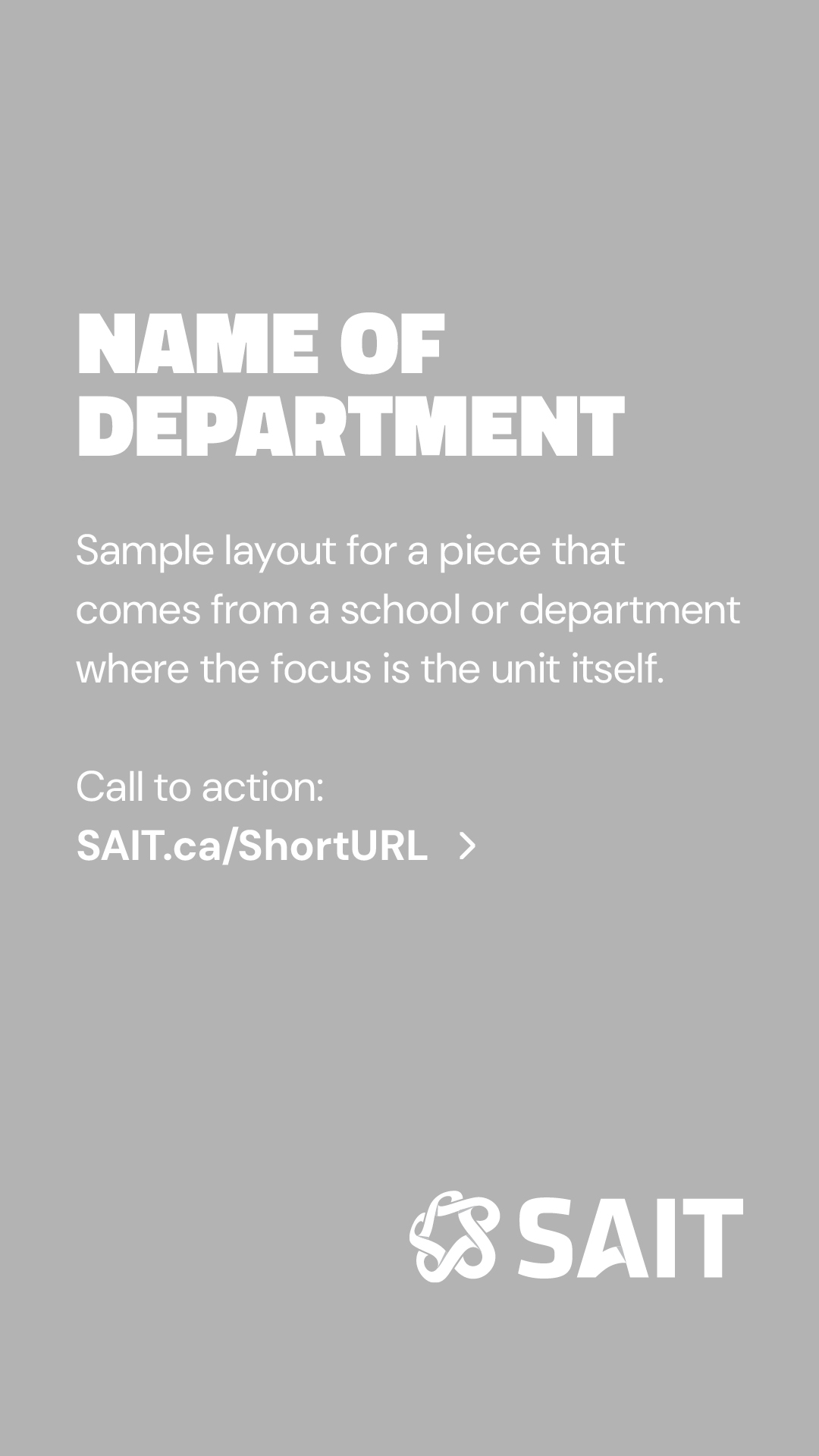
Lockups
Every school at SAIT has a lockup version of the logo. It is a fixed arrangement of our brand’s logo elements: the horizontal logo in its defined proportions, including the catalyst symbol and SAIT wordmark, plus text to identify specific academic schools/centres. It is best to use lockups for sponsor recognition, merchandise and documentation.
In other contexts, like stationery, business cards, websites or external-facing marketing, it is more appropriate to use the primary SAIT logo while including the name somewhere on the piece. This solves most design challenges. There are many ways to adjust the hierarchy to a focal point – whether it be the headline, unit name or message that should be featured prominently. Check out the examples for how to incorporate the SAIT logo while identifying your area.
Contact brand.questions@sait.ca to request your lockup files. If you believe your academic area requires an official lockup not listed here, please connect with us for a discussion at brand.questions@sait.ca.

Approved lockups









Examples of core brand and lockup use

Sub-brands
A sub-brand is a distinct brand within SAIT’s brand architecture. It targets a specific audience or market segment while maintaining a connection to the core brand.
To reinforce this connection to the core brand, sub-brands share some visual or conceptual elements. They must use the word ‘SAIT’ within the logo. They must also keep some elements from the core brand, such as institutional fonts or colours. Sub-brands can be used alongside the core brand or stand alone.
Sub-brands are approved, designed and distributed by or in partnership with the Marketing department. If you believe your initiative fits these criteria and you require a sub-brand, please contact brand.questions@sait.ca.
Examples of approved sub-brands
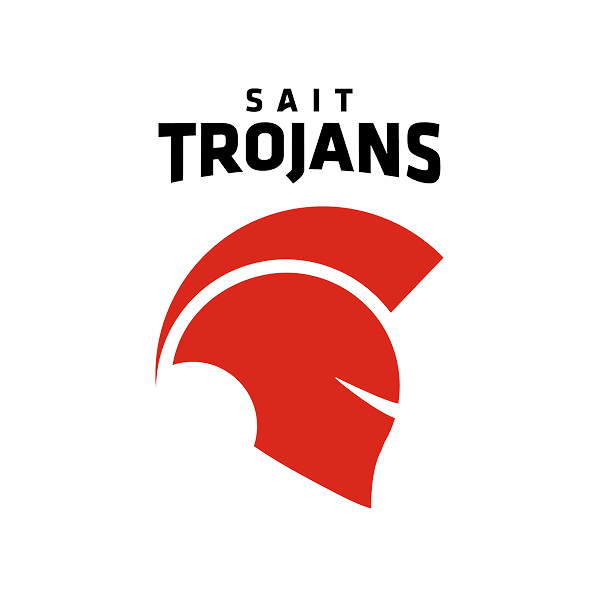


Associate brands
An associate brand is closely linked to SAIT but operates with a higher degree of independence than a sub-brand. Associate brands have specific uses within SAIT, including events, campaigns, anniversaries and more.
When used for external audiences, an associate brand must be used alongside the core SAIT logo, either beside it or elsewhere within the piece. While associate brands may select their own fonts to represent their identity, the use of additional icons or symbols is not permitted, as these can overshadow the SAIT brand.
Examples of associate brands



Brand partnerships
There are specific rules when partnering with other brands. When pairing SAIT’s logo with partner logos, maintain balanced spacing and clear hierarchy. You must use the spacing guidelines to determine the minimum space between logos.
Co-branded materials must undergo an approval process by both brands to ensure consistency and adherence to brand standards. You may use a divider between two logos, but it’s not mandatory. If there are three or more logos, no divider should be used. If two or more academic units are working in partnership, use the primary SAIT logo only – do not use more than one lockup.
It is important to note that SAIT no longer changes elements within its logo to advocate for equity-deserving initiatives or movements, such as Pride. We now show our support by aligning our logo in a partnership format where appropriate.
All third parties must fill out a trademark license agreement to use the SAIT brand or logos. This helps us avoid situations where the core brand is used in ways that might misleadingly imply the endorsement of entities or activities over which SAIT has no control.
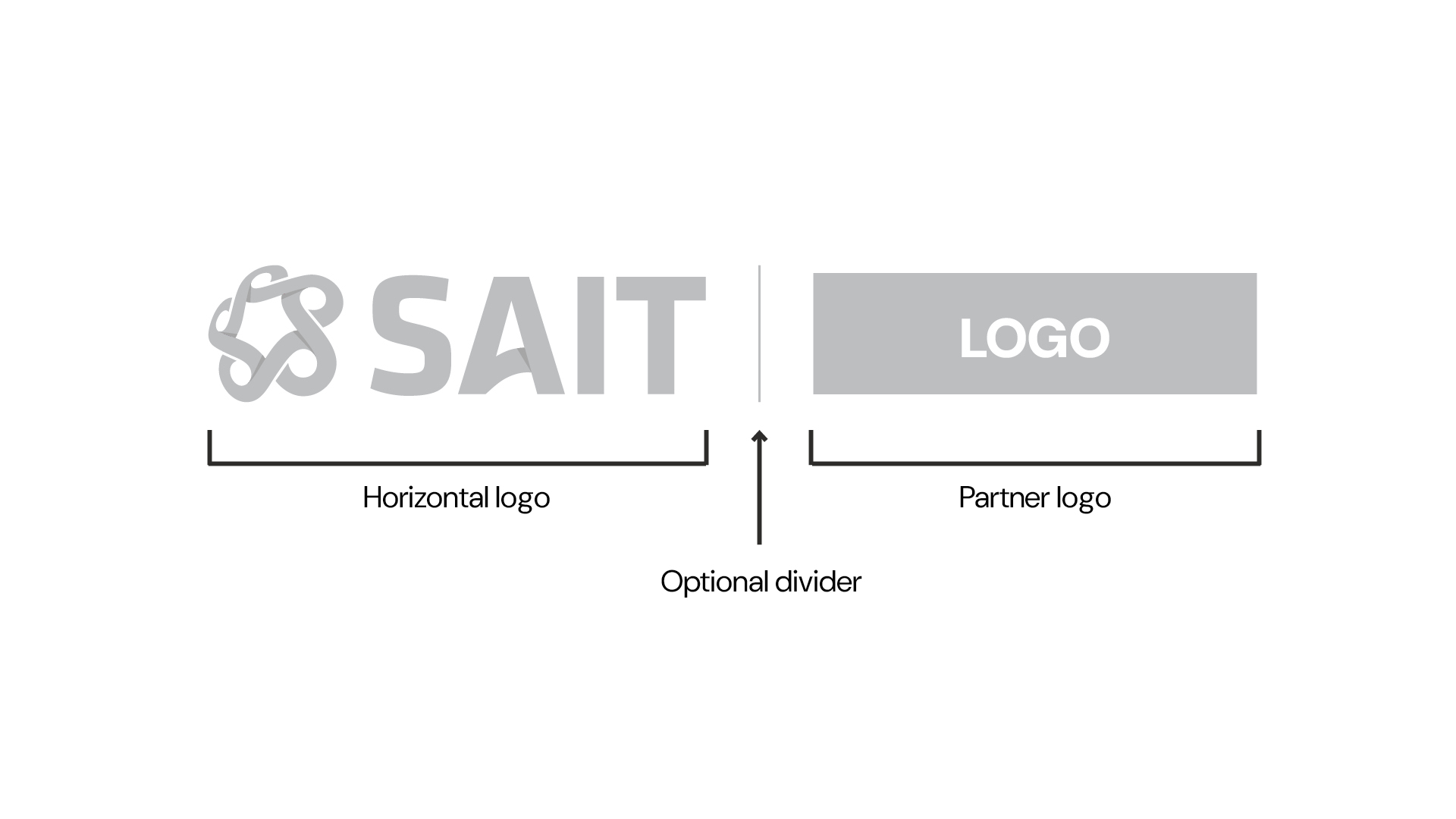
Examples of paired brands



Examples of independent brands at SAIT




Questions?
Send us an email: brand.questions@sait.ca.

Oki, Âba wathtech, Danit'ada, Tawnshi, Hello.
SAIT is located on the traditional territories of the Niitsitapi (Blackfoot) and the people of Treaty 7 which includes the Siksika, the Piikani, the Kainai, the Tsuut’ina and the Îyârhe Nakoda of Bearspaw, Chiniki and Goodstoney.
We are situated in an area the Blackfoot tribes traditionally called Moh’kinsstis, where the Bow River meets the Elbow River. We now call it the city of Calgary, which is also home to the Métis Nation of Alberta.